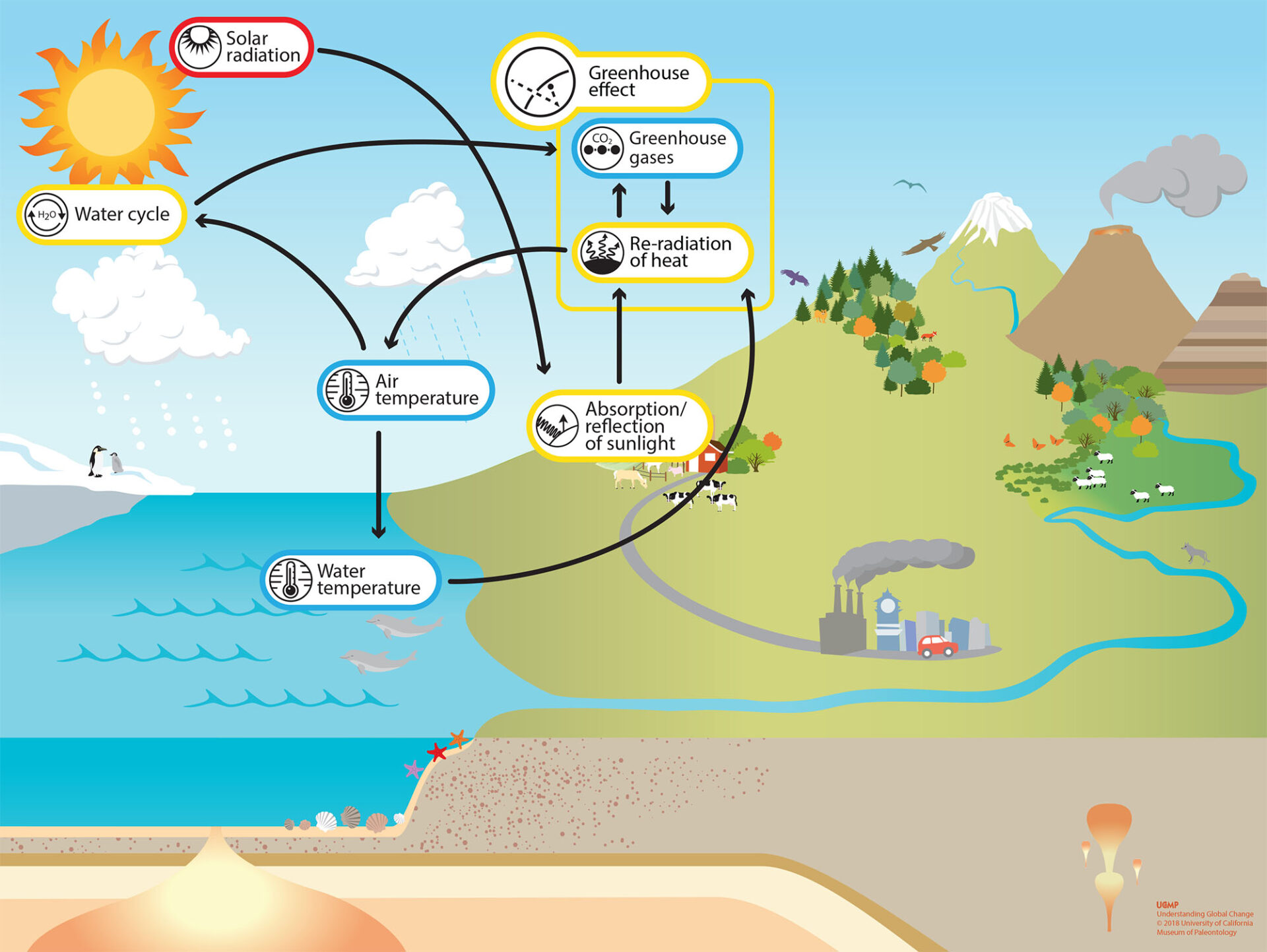Table Of Content

Greenhouse gas emissions are often measured in carbon dioxide (CO2) equivalent. To convert emissions of a gas into CO2 equivalent, its emissions are multiplied by the gas's Global Warming Potential (GWP). The GWP takes into account the fact that many gases are more effective at warming Earth than CO2, per unit mass.
greenhouse effect
Carbon dioxide, a key greenhouse gas that drives global climate change, continues to rise every month. Overall, fluorinated gas emissions in the United States have increased by 105% between 1990 and 2022. This increase has been driven by a 349% increase in emissions of hydrofluorocarbons (HFCs) since 1990, as they have been widely used as a substitute for ozone-depleting substances. Emissions of perfluorocarbons (PFCs) and sulfur hexafluoride (SF6) have declined during this time due to emission-reduction efforts in the aluminum production industry (PFCs) and the electrical transmission and distribution industry (SF6). And the projected climate and public health benefits far outweigh costs, the EPA says.
Why does the warming matter?
Greenhouse gases from the eight plants that produced nearly all of the state’s cement increased by 26% from 2011 to 2021. California is poised to fail to meet its ambitious greenhouse gas reduction goals by the end of the decade unless it can triple its efforts to reduce carbon emissions statewide, according to a critical new report. One way to understand responsibility for greenhouse gas emissions is to examine which countries emit the most every year. The answer may not be as clear as one might assume, because the top emitters change depending on how the data is collected and what numbers are included. During COP26, the European Union and the United States launched the Global Methane Pledge, which will see over 100 countries aim to reduce 30 per cent of methane emissions in the fuel, agriculture and waste sectors by 2030.
What are greenhouse gases?
California the culprit for spike in little-known greenhouse gas more potent than CO2 - The Guardian US
California the culprit for spike in little-known greenhouse gas more potent than CO2.
Posted: Fri, 19 Apr 2024 18:31:00 GMT [source]
In 2022, direct and indirect greenhouse gas emissions from homes and businesses accounted for 31% of total U.S. greenhouse gas emissions. Greenhouse gas emissions from homes and businesses vary from year to year, often correlated with annual fluctuations in energy use caused primarily by weather conditions. Total residential and commercial greenhouse gas emissions, including direct and indirect emissions, in 2022 have increased by less than 1% since 1990. Greenhouse gas emissions from on-site direct emissions in homes and businesses have increased by 8% since 1990. Additionally, indirect emissions from electricity use by homes and businesses increased from 1990 to 2007, but have decreased since then to approximately 4% below 1990 levels in 2021. The next most significant greenhouse gas is surface, or low-level, ozone (O3).
Each of these gases can remain in the atmosphere for different amounts of time, ranging from a few years to thousands of years. All these gases remain in the atmosphere long enough to become well mixed, meaning that the amount that is measured in the atmosphere is roughly the same all over the world, regardless of the source of the emissions. If you’re interested in learning more about the GHG emissions project, or other projects related to dairy sustainability or on-farm research, take a look at the NMSP website. If you are a farmer interested in estimating your greenhouse gas footprint, contact Olivia Godber with questions or a request to join the project.
Emissions of Fluorinated Gases
The greenhouse effect describes a similar phenomenon on a planetary scale but, instead of the glass of a greenhouse, certain gases are increasingly raising global temperatures. Chlorofluorocarbons (CFCs) are the only greenhouse gases not created by nature. To find out more about the role of fluorinated gases in warming the atmosphere and their sources, visit the Fluorinated Greenhouse Gas Emissions page. Nitrous oxide emissions in the United States decreased by 3% between 1990 and 2022. During this time, nitrous oxide emissions from mobile combustion decreased by 56% as a result of criteria pollutant emission standards for on-road vehicles.
The Rise of Atmospheric Carbon Dioxide
The table shown below provides examples of opportunities to reduce emissions from homes and businesses. For a more comprehensive list of options and a detailed assessment of how each option affects different gases, see Chapter 9 and Chapter 12 of the Contribution of Working Group III to the Sixth Assessment Report of the Intergovernmental Panel on Climate Change. More information about facility-level emissions from large industrial sources is available through EPA's Greenhouse Gas Reporting Program data publication tool. National-level information about emissions from industry as a whole can be found in the sections on Fossil Fuel Combustion and the Industrial Processes chapter in the Inventory of U.S. In this free climate resource, learn which countries, populations, industries, and companies are the top greenhouse gas emitters, currently and historically.
Methane Emission Trends Trends
Thus the new inventory may report a different emission level for an earlier year than previous inventory editions. The basics of the phenomenon were worked out well over a century ago by Swedish physicist and chemist Svante Arrhenius, in 1896. His paper, published in the Philosophical Magazine and Journal of Science, was the first to quantify the contribution of carbon dioxide to what scientists now call the "greenhouse effect." The table shown below provides examples of opportunities to reduce emissions from agriculture. For a more comprehensive list of options and a detailed assessment of how each option affects different gases, see Chapter 7 of the Contribution of Working Group III to the Sixth Assessment Report of the Intergovernmental Panel on Climate Change.
The increased level of greenhouse gases in the atmosphere leads to increased warming of water bodies and land. This will eventually increase the amount of water vapour which also has the ability to absorb radiant energy. In the LULUCF sector, opportunities exist to reduce greenhouse gas emissions and increase the potential to sequester carbon from the atmosphere by enhancing sinks. The table shown below provides some examples of opportunities for both reducing emissions and enhancing sinks.
Methane is about 21 times more efficient at absorbing radiation than CO2, giving it a higher GWP rating, even though it stays in the atmosphere for only about 12 years, according to the United Nations Framework Convention on Climate Change (UNFCCC). Although methane and other GHGs are capable of trapping more heat than CO2, scientists still consider carbon dioxide to be the dominant greenhouse gas because its warming effect outlives the others' effects by centuries. In 2022, the net CO2 removed from the atmosphere from the LULUCF sector was 13% of total U.S. greenhouse gas emissions. Between 1990 and 2022, total carbon sequestration in the LULUCF sector decreased by 11%, primarily due to a decrease in the rate of net carbon accumulation in forests, as well as an increase in CO2 emissions from urbanization.

The energy-intensive industries causing emissions often vary depending on each country’s economic climate. For example, Guyana and Paraguay are clearing lots of forestland to make way for new industries, so deforestation contributes to climate change there. In Mongolia, the use of fossil fuels and the clearing of grasslands for agriculture contribute to the country’s high emissions profile. Nitrous oxide emissions are measured in tonnes of carbon dioxide equivalent (CO2e), so are weighted for their 100-year global warming potential value. Methane emissions are measured in tonnes of carbon dioxide equivalent (CO2e), so are weighted for their 100-year global warming potential value.

No comments:
Post a Comment